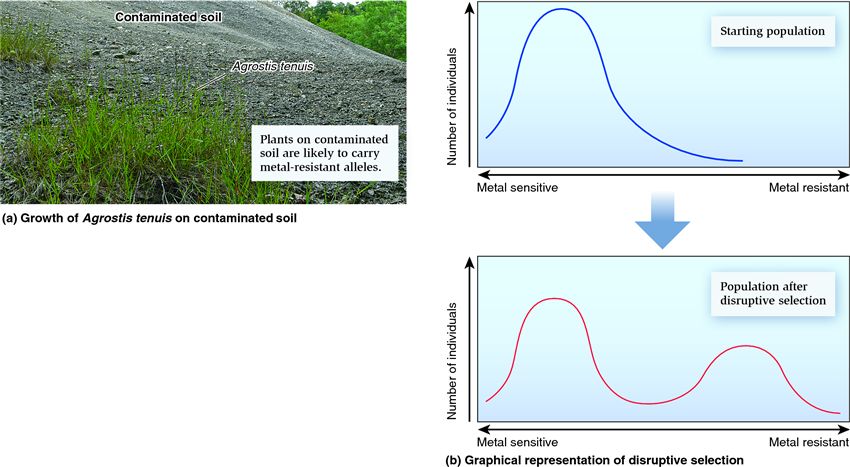 |
| Previous Image | Next Image |
| Description: This pattern of natural selection selects for two different phenotypes, each of which is most fit in its particular environment. (a) In this example, mutations have created metal-resistant alleles in colonial bentgrass (Agrostis tenuis) that allow it to grow on soil contaminated with high levels of heavy metals, such as copper. These alleles provide high fitness where the soil is contaminated, but they confer low fitness where the soil is not contaminated. Because both metal-resistant and metal-sensitive alleles are maintained in the population, this situation is an example of disruptive selection caused by heterogeneous environments. (b) These graphs show the change in phenotypes in this bentgrass population before and after disruptive selection.
Picture Stats: Views: 2753 Filesize: 68.36kB Height: 467 Width: 850 Source: https://biology-forums.com/index.php?action=gallery;sa=view;id=695 |
